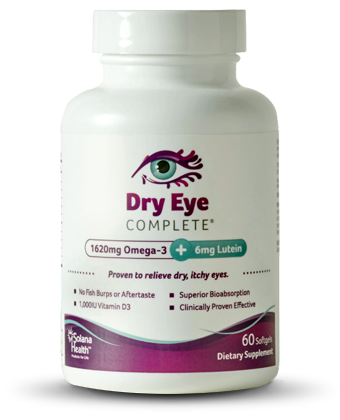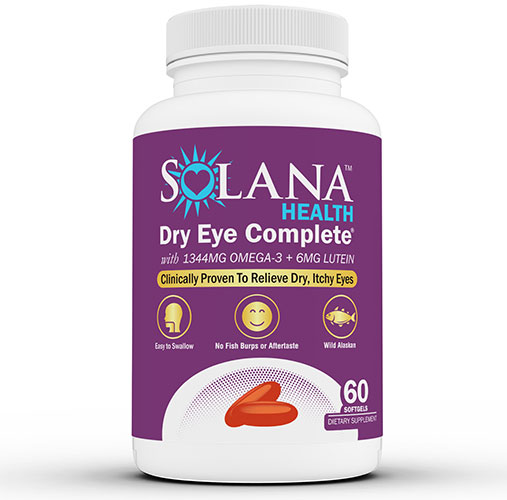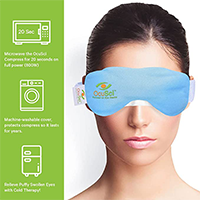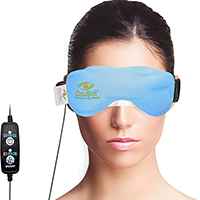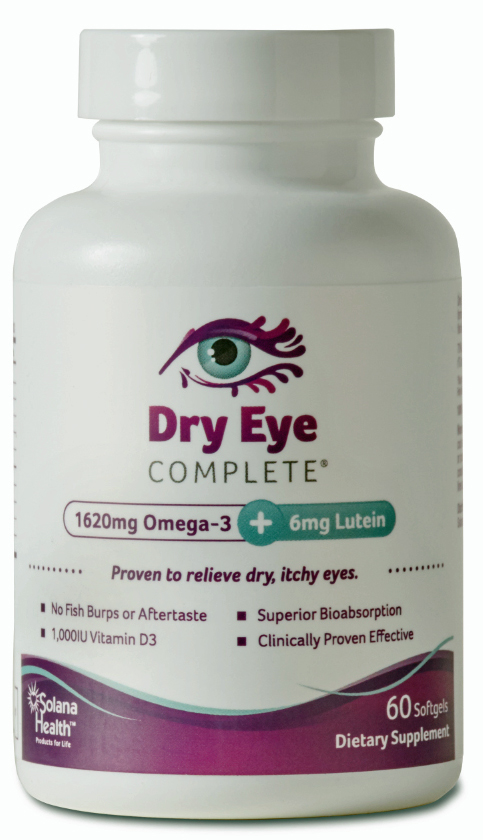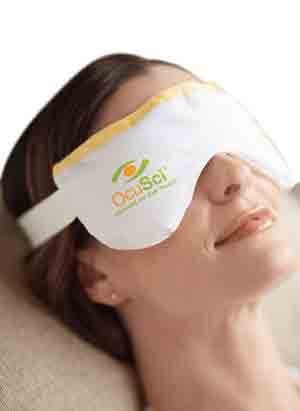Dry eye disease, also known as dry eye syndrome, or DES, is a very common affliction of the eye. It is caused, in the main, by either insufficient tear production, or the quality of tears being too low. When either of these situations happens, the eyes become red and swollen (inflamed). The medical terminology for DES is keraconjunctivitis sicca.
Dry Eye Causes
Most people over 65, and particularly post-menopausal women, will experience at least a certain degree of DES. The most common causes of the condition include:
- Age, as we get old, the quality and quantity of tear production is affected.
- Gender, with it being most common in post-menopausal women due to changes in their hormones. It is also common in women who are pregnant or who take certain contraceptive pills, due to the same reasons.
- Certain medications, most notably antidepressants, blood pressure medications, decongestants, antihistamines and diuretics, can reduce quantity and quality of tears.
- Certain medical conditions, including thyroid problems, diabetes, rheumatoid arthritis and other autoimmune disorders. Blepharitis, which is an inflammation of the eyelids, and Meibomian gland dysfunction, can also cause dry eye syndrome.
- The environment, with people in arid climates or those who overuse the air conditioning or heating system, being most at risk. Wind can also contribute, as can prolonged use of computer screens.
- Other factors, including LASIK or other refractive eye surgery and long term contact lens use.
In terms of biology, DES is caused by an insufficient quantity or quality of tears:
- Insufficient quantity of tears can happen when any of the eyelids’ glands cannot produce tears properly anymore.
- Poor quality of tears happens when any of the three layers of the tear (mucus, lipid or aqueous) are disrupted. A problem with the lipid (oily) layer is most common, as this leads to tears evaporating too quickly or not spreading across the eyeball properly.
Symptoms of Dry Eye Syndrome
First of all, the symptoms of DES tend to fluctuate as the day goes on. In fact, each blink can cause the symptoms to change. Usually, the symptoms get worse as the day progresses, particularly if it is caused by insufficient tears. If, however, it is associated with blepharitis, which comes with itching and burning, the symptoms tend to be worse on first waking up. The table below highlights the most common types of symptoms.
| Type of Symptom | Specifically | Details |
| Visual | Blurred vision | Visual acuity starts to fluctuate, making it harder to see find details. Objects, either near or far, start to appear out of focus. |
| Photo phobia | This is a sensitivity to light, which can be very extreme. It happens when the surface of the eye becomes dry, scattering light that enters it. This can lead to serious discomfort, causing people to squint, resulting into headaches. | |
| Difficulty driving at night | When there isn’t much light, for instance at night, the pupil becomes bigger so that more light can get into the eye. In people with dry eyes, this light scatters and is unfocused. During the day, the smaller pupil is able to filter this out, but when it gets larger at night, more abnormalities can occur. Most people see halos, which are auras or circles around light sources, and glares, which is a type of photophobia. These symptoms can be particularly bad when exposed to headlights from oncoming traffic and this makes night time driving dangerous. | |
| Physical | Feeling like there is something in the eye | |
| Redness | This is caused by the blood vessels on the eye enlarging. | |
| Pain | People with DES can experience anything from mild to severe pain. This can be felt on the surface of the eyeball itself, but also in the scalp or the eyelids. | |
| Periocular irritation | This includes itching, burning and stinging. | |
| Watering | People with DES often have tears streaming from their eyes. This seems conflicting, but it is simply the brain’s response to irritation. These extra tears are mainly made up of water. | |
| Fatigue | Eyelids are heavy and the eyes feel tired. | |
| Less ability to focus | This is particularly common if visual attention must be prolonged. | |
| Contact lenses becoming uncomfortable | Pain or irritation is experienced. | |
| Inability to cry | ||
| Discharge | A mucus discharge that can happen at any point during the day, although it is most common on waking up. This means that the eyelids may feel like they are stuck together. |
Most people only experience mild symptoms, and they tend to come and go. However, the symptoms can become more severe, including extreme photophobia and vision deterioration. As DES is a chronic condition, the symptoms tend to get worse over time. Very rarely, people will experience scarring of the cornea, which is generally caused by them rubbing their eyes due to the irritation. This can lead to permanent loss of vision.
When to See a Doctor
Most people who have dry eye don’t go to see a specialist in the early stages of their condition, choosing to self-medicate instead. While this is generally not dangerous, it is better to go see an ophthalmologist anyway, as he or she can help you to identify which type of treatment is better for you, even if it is through over the counter remedies. Do also speak to your general physician, who may be able to determine that a certain medication you are taking is at the heart of it, and that this may need to be changed.
The ophthalmologist will complete a number of tests in order to determine what lies at the heart of your dry eye syndrome. A number of reasonably non-invasive tests are available. These can measure your tear breakup time and the composition of your tears, for instance.
Dry Eye Complications
Most people never experience any serious symptoms from dry eye. However, it is possible for it to cause complications as well. You may, for instance, start to experience symptoms of conjunctivitis. This happens when the white part of the eyeball, both the inner surface and the outer cell layer, becomes inflamed. The symptoms are very similar to DES, including a gritty feeling, red eyes, sticky eyelids in the morning, and burning sensations. Usually, conjunctivitis related to DES is mild at doesn’t require medical treatment. However, chronic or long term conjunctivitis will need to be addressed.
A second complication is more serious and is an inflammation of the cornea. This is most common in people with severe DES and who do not respond to treatment well. This condition is known as keratitis. When keratitis takes place, the cornea can become infected and ulcerated, and this is a real threat to vision. Extreme photophobia, eye pain and vision deterioration are all symptomatic of keratitis. You must seek immediate medical attention if you suspect you have keratitis.
Resources and References:
- Facts About Dry Eyes – Information on dry eye syndrome. (National Eye Institute)
- Diseases and Conditions: Dry Eyes – Information on dry eyes. (Mayo Clinic)
- Dry Eye – Information on dry eye syndrome. (American Optometric Association)
- Patient Care: Dry Eye Syndrome – Treatments for dry eyes. (Kellogg Eye Center

